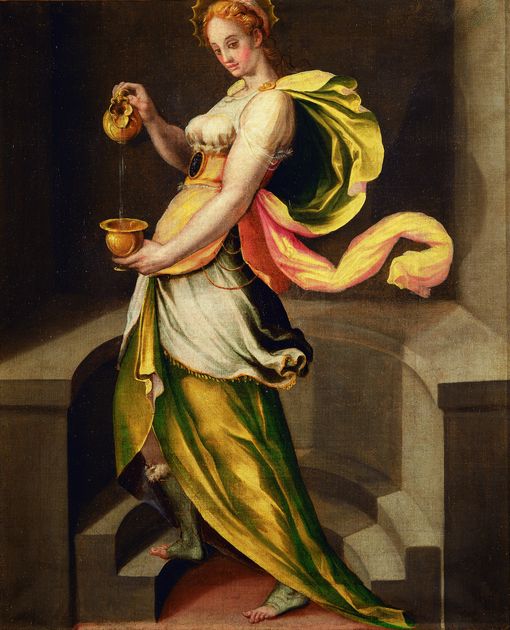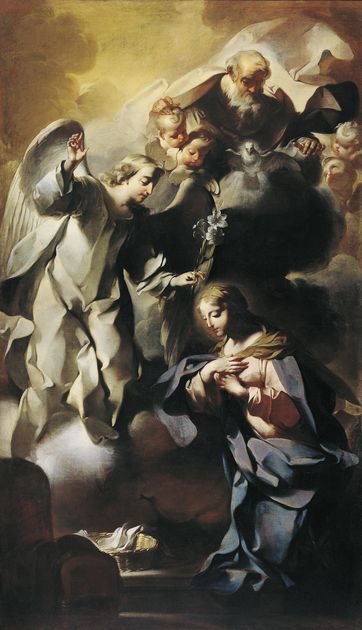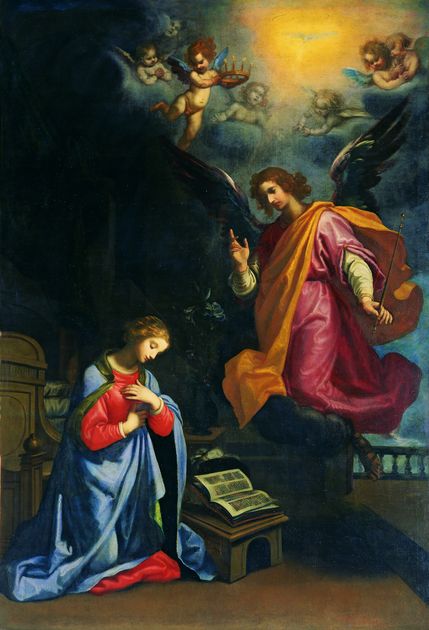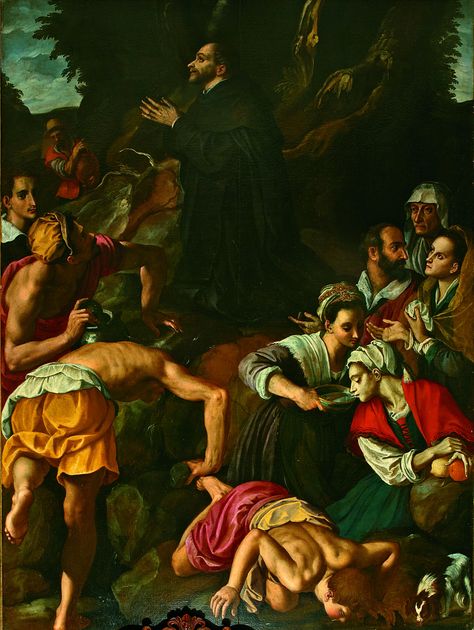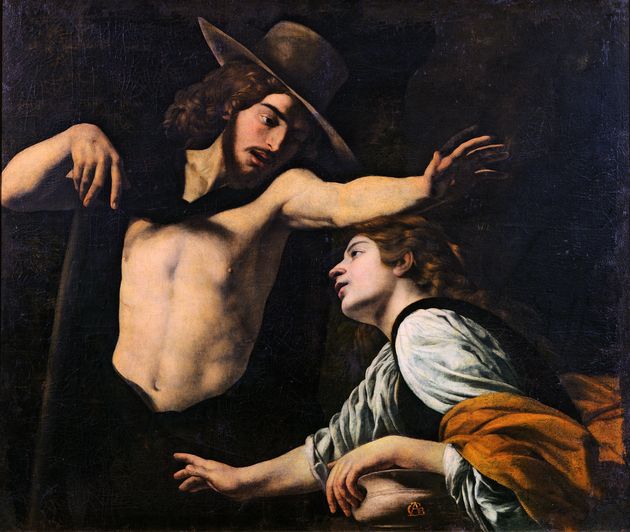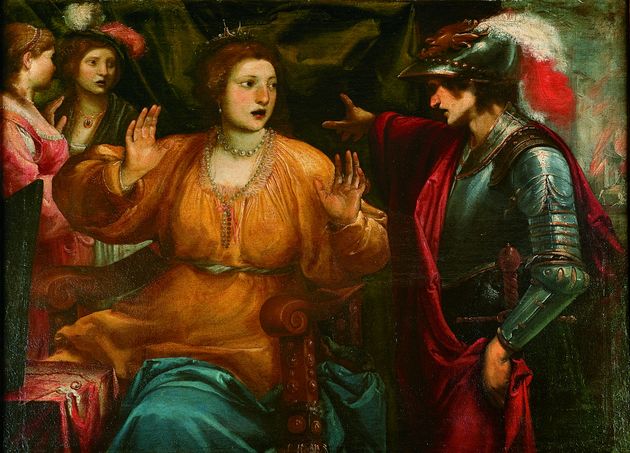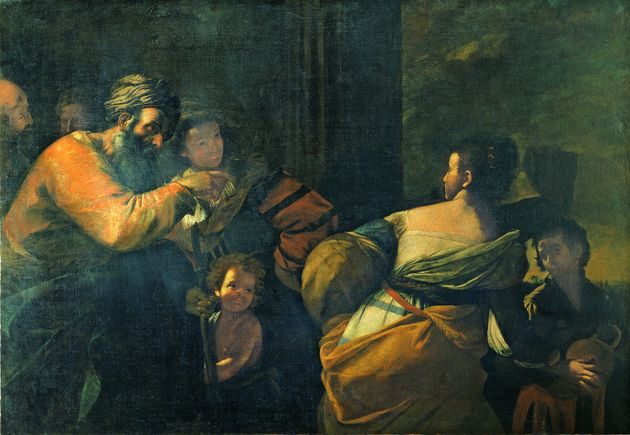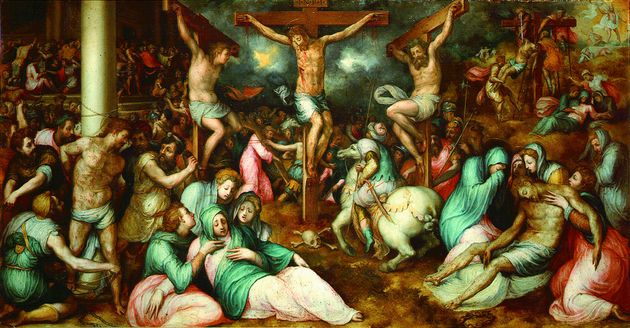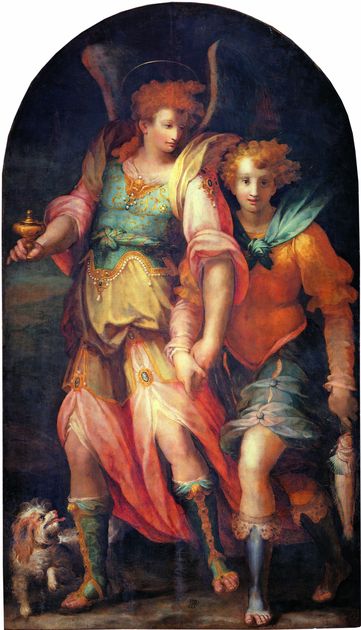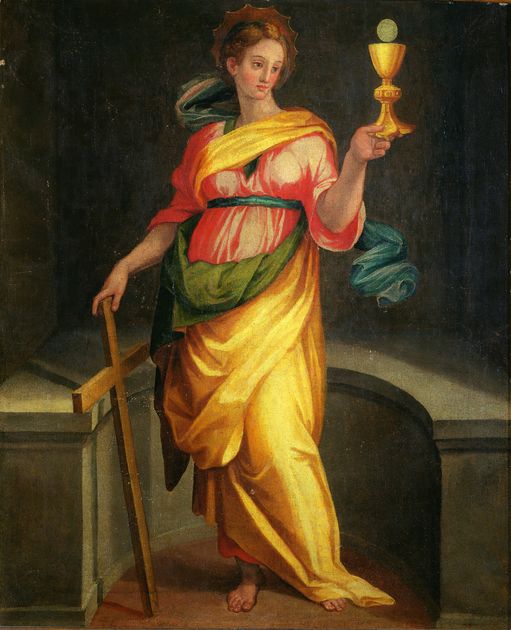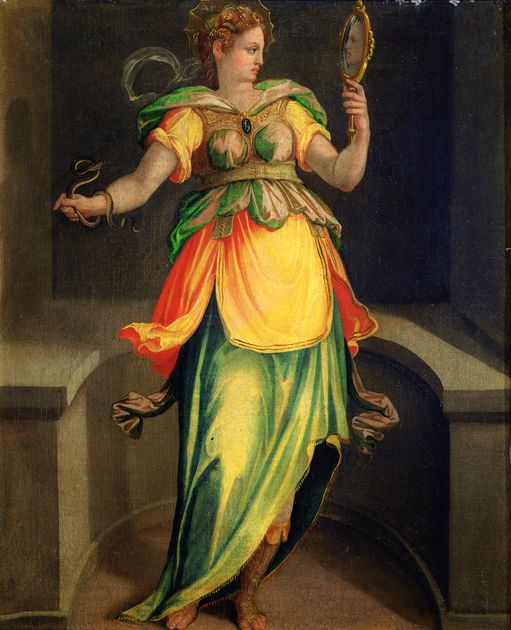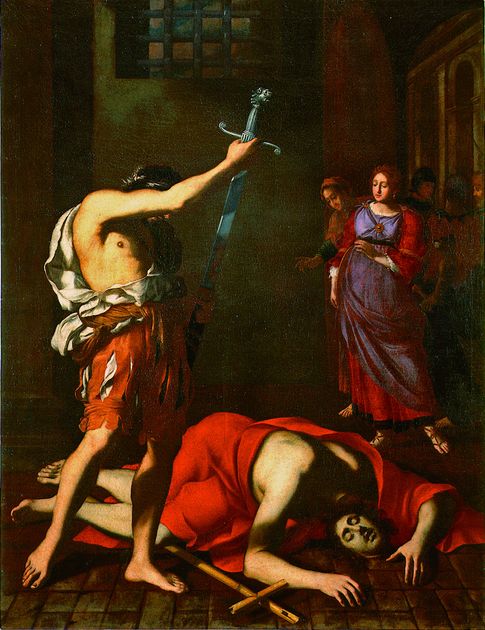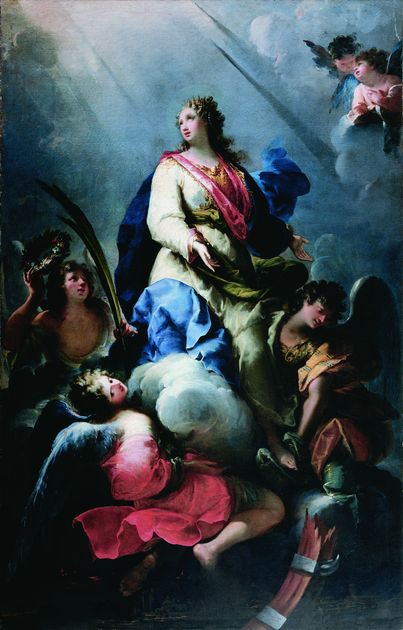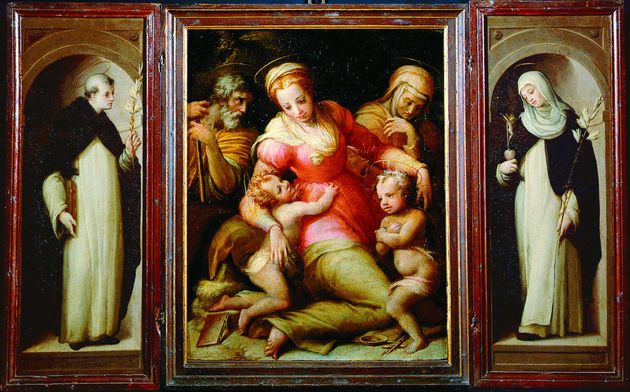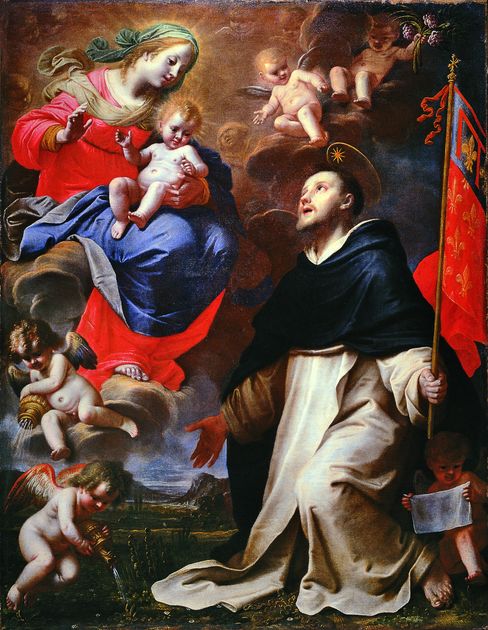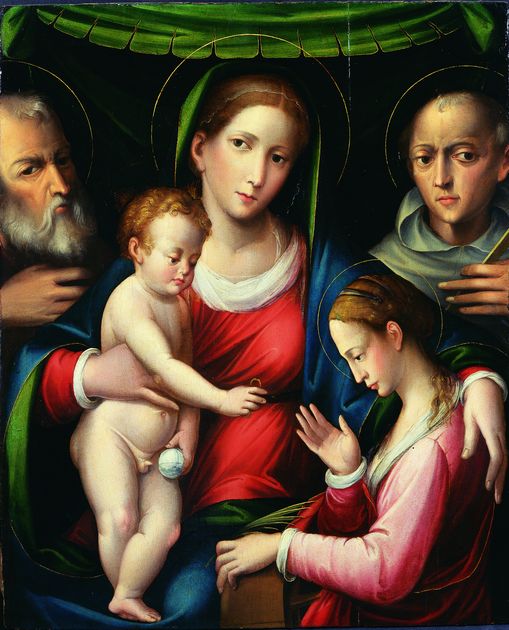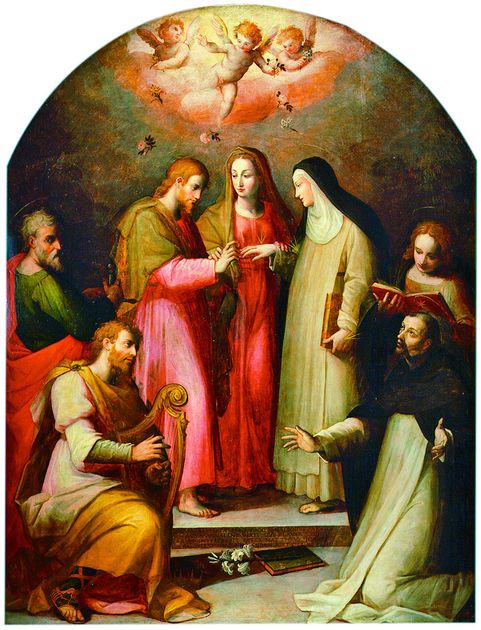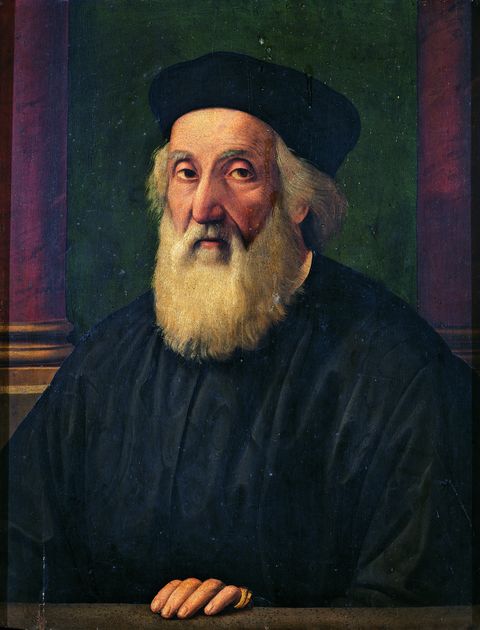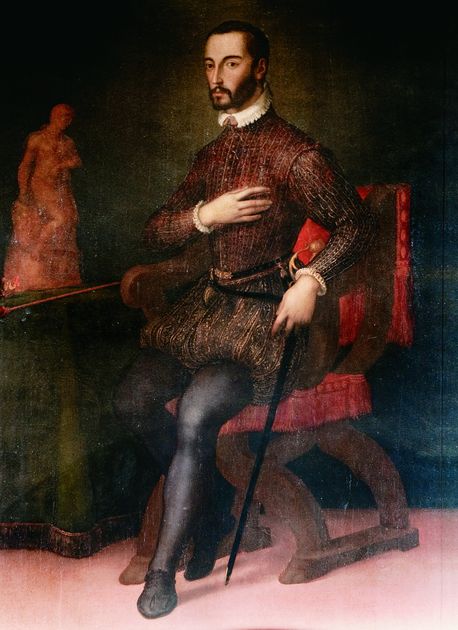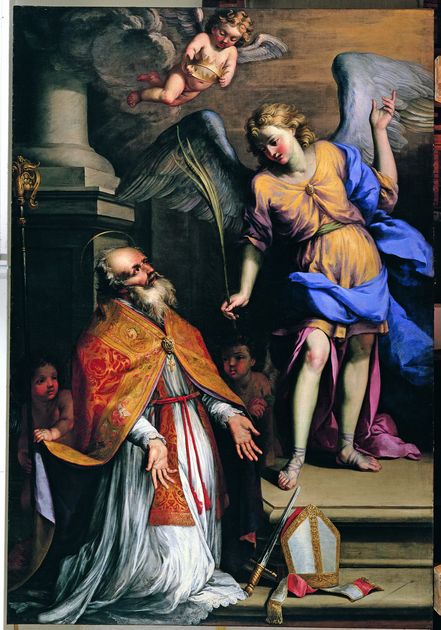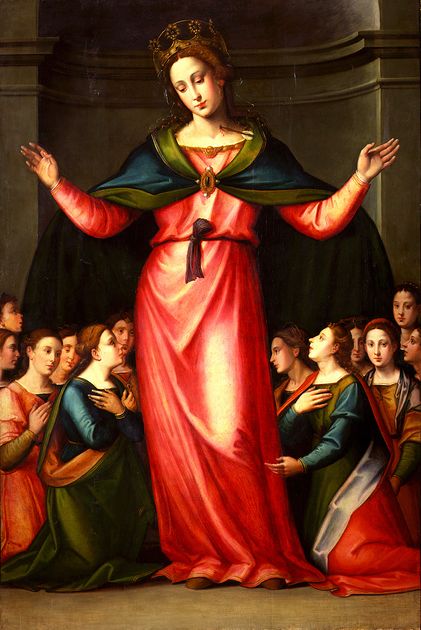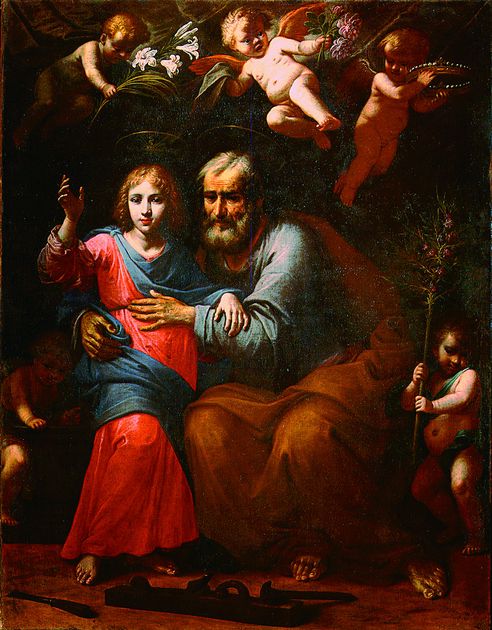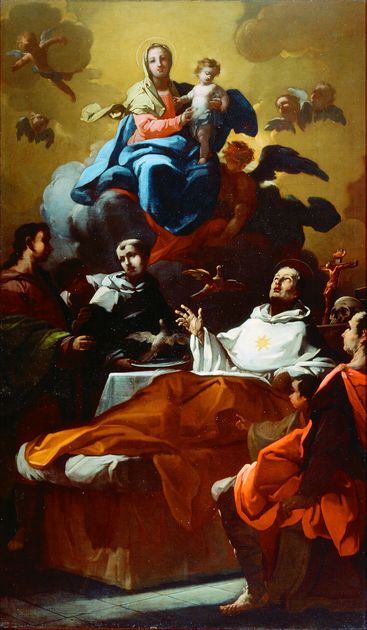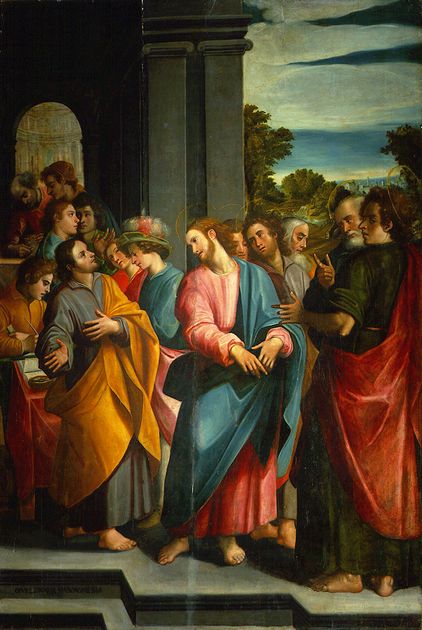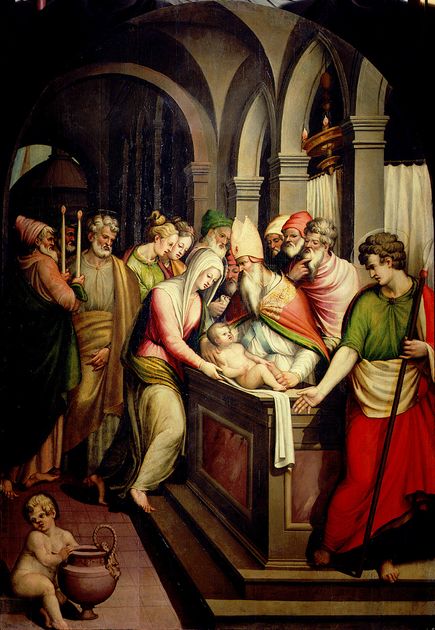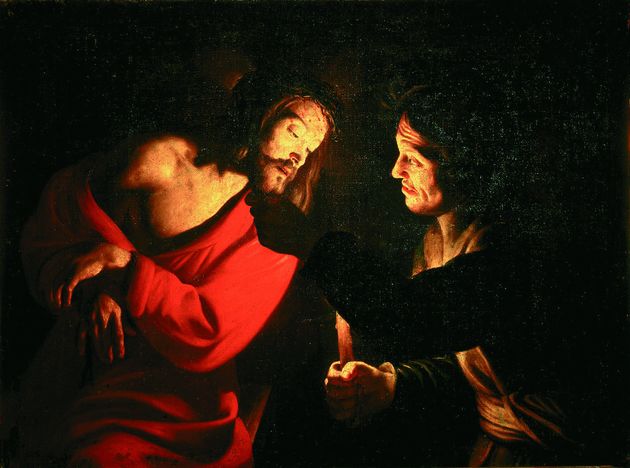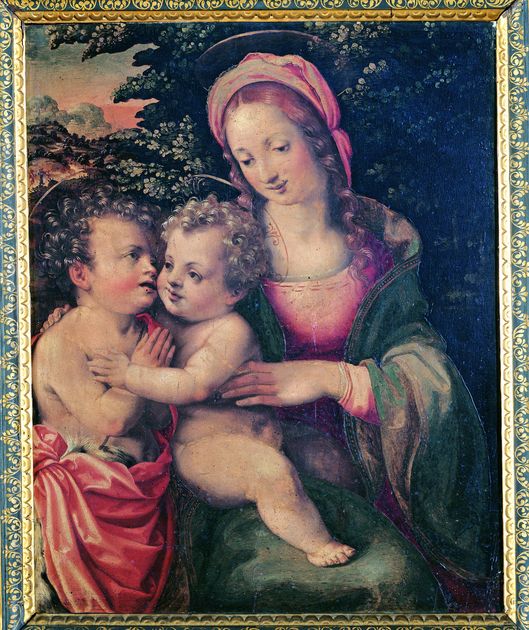After studying under Jacopo Ligozzi, then under Matteo Rosselli, Mario Balassi finally became the assistant of Domenico Cresti called the Passignano, whom he followed to Rome. He was then taken to Vienna by Ottavio Piccolomini, and later he moved to Friuli, then Venice, before returning to Florence around 1637. Straight after these travels, during which he had developed an even more eclectic style, Balassi obtained an important commission in Prato, thanks to the Cicognini family: the altarpiece for the new sanctuary of Santa Maria della Pietà. This commission provoked criticism from various Prato citizens, for whom this unknown artist was little more than a “brush-wiper”.
Some years later his fame must have grown considerably because he received no less than 400 scudos for the altarpiece now here on display, painted between 1644 and 1647 for the Modesti altar in San Francesco.
The painting represents the Miracle of St. Nicholas of Tolentino, with the ill St. Nicholas refusing to eat the partridges laying on the dish: rather, for his benevolence, he decides to revive them, while all the astonished onlookers witness the scene. The intricate, dynamic and slightly forced composition, which is however spectacularly theatrical, still has some elements of Ligozzi’s style (the sumptuously-set table, with the precious jug and cat, and certain highlights), but above all it shows the influences of Balassi’s Roman experiences, from the Poussin-type classicism to the Caravaggism of the treatment of the background, the strong contrasts, and certain poses (the man with his arms raised recalls the Deposition of the Vatican Picture Gallery).
The appreciation of this altarpiece is demonstrated by another two commissions given to Balassi after Prato was promoted to Diocese and City in 1653: the two of his paintings for the Town Hall, Madonna and Child with St. Dominic and St. Joseph with the Child Jesus, on display in this same room.

